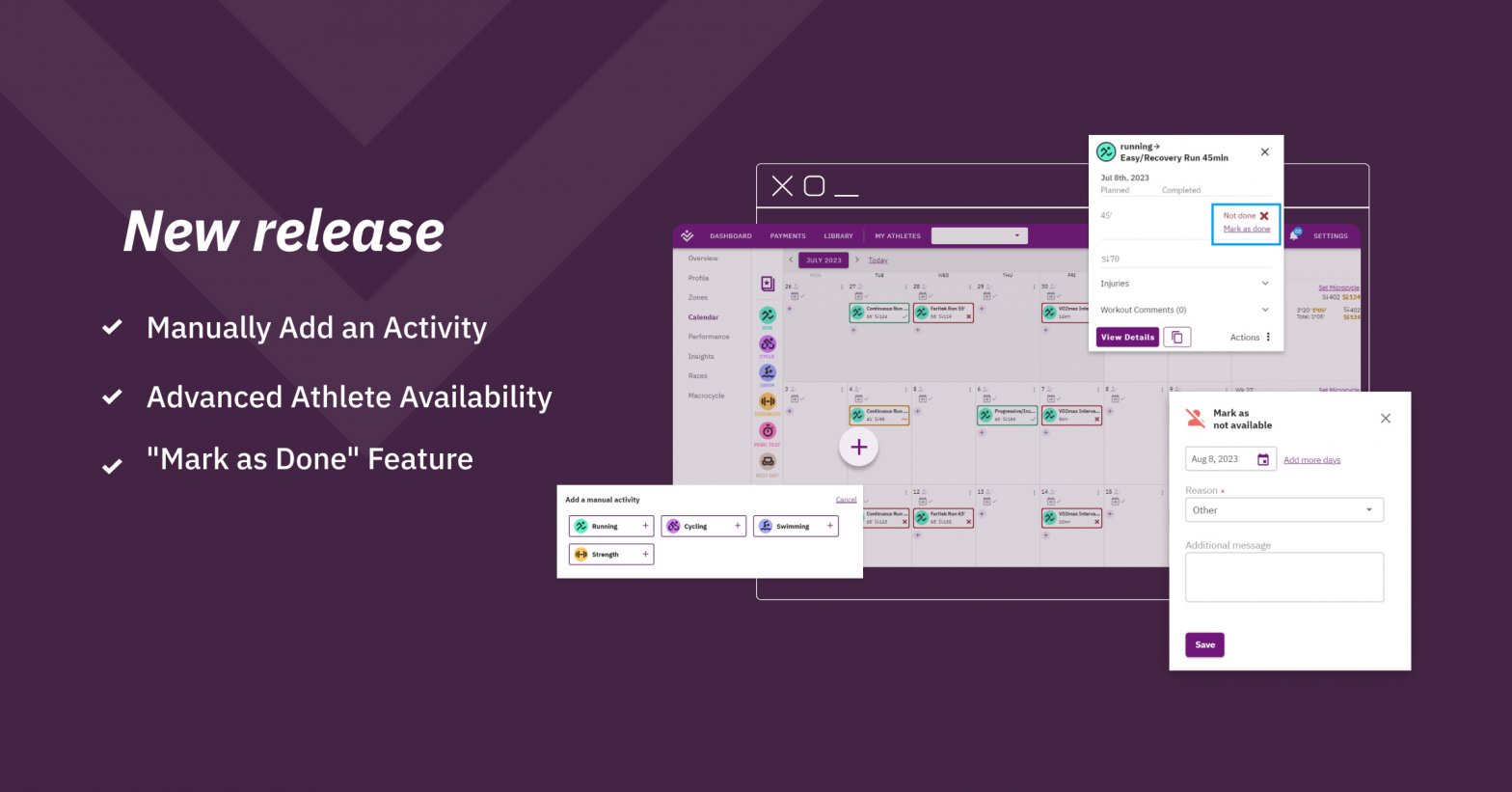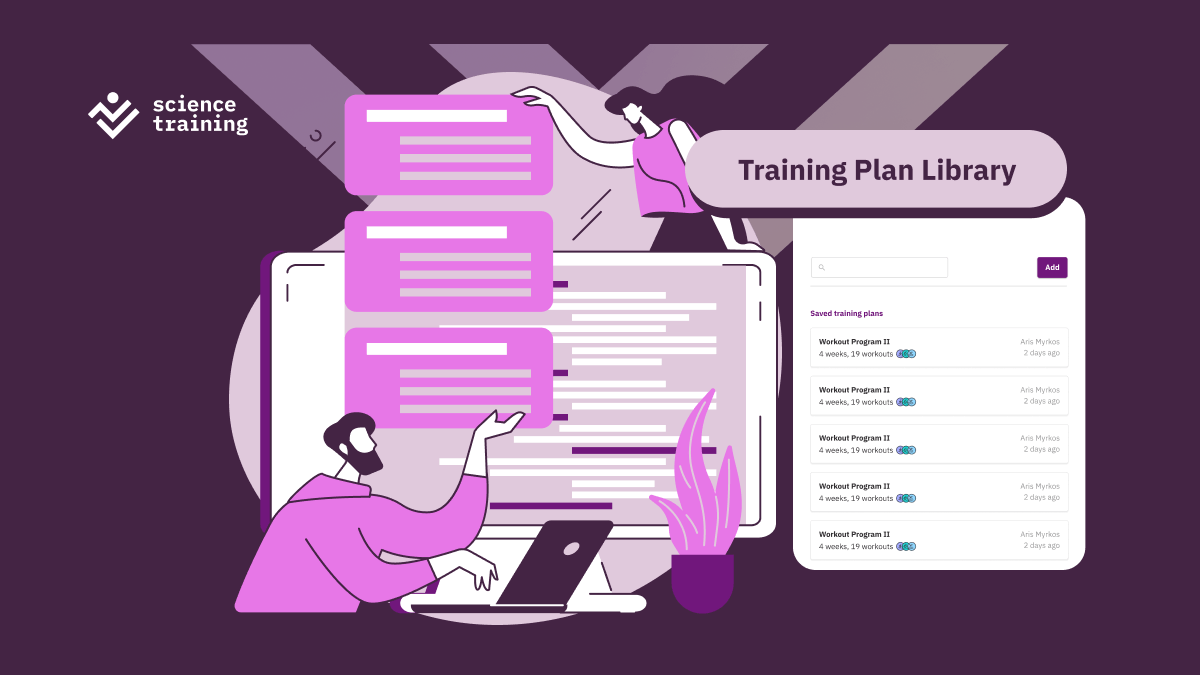To start with the basics, what is endurance? In general, endurance is the capacity of keeping on during an activity that requires physical effort. Likewise, when we talk about endurance in sports, we refer to the ability of an athlete to apply themselves onto their training, for an extended period of time. Hence, endurance coaching is all about helping athletes build stamina and physical resistance; as well as recover quickly and smoothly from trauma, wounds and, of course, fatigue.
What’s more, endurance in sports is divided in 3 main categories; aerobic, anaerobic, and muscular endurance. However, in endurance coaching, we are mainly concerned with aerobic endurance. To elaborate, aerobic endurance is the ability of the body to produce energy from mitochondria via aerobic metabolism, using oxygen; of course, for an extended period of time.
Endurance coaching: The main characteristics of aerobic endurance
In endurance coaching terms, aerobic endurance features physical activities lasting longer than 3 minutes; and, with a level of intensity often called low to medium intensity. In reality, the intensity is within the range of 40-100% of VO2max in running or at maximal aerobic power in cycling.
Indeed, the aerobic metabolism is the main energy supplier, even after the “anaerobic threshold” has been reached. That’s why this threshold is slowly being excluded from the scientific approach; the activity remains aerobical, in any case.
The key parameters of aerobic capacity in endurance coaching
1. VO2max
VO2max is the maximum amount of oxygen an athlete can consume, during exercise. It’s a very important factor in aerobic capacity, and an index of good health. High-intensity interval endurance training is an effective method to improve aerobic capacity. That’s true for both athletically inclined populations and populations that may suffer from malnutrition, or bad health (Smilios et al 2018).
2. Lactate Threshold
During the last, nearly 60 years, the blood lactate curve and lactate thresholds (LTs) have become important in the diagnosis of endurance performance (Faude et al. 2009). Hence, the lactate threshold is of cardinal importance in endurance coaching; that is, regarding the endurance analysis, and the prediction of aerobic endurance performance.
Furthermore, it represents the point from where we observe any abrupt increase in blood lactate. That may happen when the glycolytic concentration rate cannot be matched by aerobic pyruvate combustion. In the last decades, we often use LT in endurance coaching to optimize the training zone of athletes, as well.
3. Exercise Economy
In short, exercise economy represents the energy required to swim/cycle/run etc., at a given intensity; usually measured in kcal/min/km. This “forgotten” factor, as it was characterized by Foster and Lucia in their 2007 research paper, is crucial; all the more so, as the running distance becomes longer (>21km or race duration >2h).
This especially stands for marathons, ultra-marathons, and triathlons; where exercise economy has probably a greater impact on aerobic performance. Of course, the VO2max, and lactate thresholds remain very important factors, as well.
The principles of endurance coaching
It goes without saying, endurance coaching goes hand in hand with a set of training principles. These principles are catalytic to a balanced training program and thus, key to a great athletic performance.
1. The principle of structured training
A structured training plan is paramount to help an athlete enhance their performance and prevent injuries. Above all, the foundation of a well-structured plan lies in a clearly defined objective; one that meets the needs of the athlete.
Based on this specific objective, all the components incorporated into the training program can ‘work together’ to bring about the desired result. In like manner, as the athlete evolves, the coach becomes more and more involved. Therefore, working on every component at the right time will produce a successful training plan; while avoiding burnout syndrome and injuries.
2. The principle of specialization
After the generic training period is complete, the coach must make their way into a specialized training program. It goes without saying, a training program must be customized for the specific type of sport; apart from the needs and goals of the athlete, of course.
To that end, the coach has to outline the physical abilities the athlete must develop for the sport in focus; that is, before designing the training plan. For example, does that sport require speed, strength, anaerobic capacity, aerobic endurance, and/or running economy to perform well? With all the prerequisites in mind, the coach will be able to design every workout session, accordingly.
3. The principle of individualization
As we often mention in our articles, coaching is not only a scientific process but also an art form; considering that the coach must adjust their methods to different individuals and training needs. Coaching certainly isn’t a ‘one size fits all’ approach, but rather a methodical individualization of the training program.
That is to say, not every athlete has the same response to the same training stimulus — each athlete is unique. For this reason, it’s crucial to coach every athlete based on their one-of-a-kind characteristics. To name a few:
- medical history and current health status
- training records
- physical capabilities
- nutrition
- physiological blueprint
Only from this point on, can the coach create an all-encompassing, personalized training program.
4. The principles of progressive increase of training load
Physiologically, the athlete is able to adapt to a higher training load than the one they’re used to. However, a coach knows that the training load must be increased gradually, because the body needs to adapt; otherwise, the athlete runs the risk of injury, due to overloading. After the body has recovered and regained balance, the athlete is ready for an upgrade in their training. Roughly speaking, an athlete can handle a 5-10% increase in the weekly training load; nevertheless, that depends on the athlete. But, as adaptation occurs, the coach must continue to slowly increase the load, to help the athlete improve and enhance their performance.
ScienceTraining: A well-rounded approach
Understanding all the elements required to maximize endurance is a touchstone in endurance coaching practices. However, understanding them alone is not enough. The key to success is knowing how to combine these elements in a way that maximizes the athlete’s performance; while minimizing, even eliminating, the danger of overtraining, burnout, and injury.
When setting up an endurance training plan, a coach needs to apply scientific knowledge and experience in equal measure; also, combine them with the aforementioned training principles, for a comprehensive and balanced training program.
Nonetheless, monitoring is yet another important practice; without close monitoring, a coach could not review and readjust, in order to optimize the athlete’s performance. That is to say, the whole training approach in endurance coaching is not a static process; but rather, a dynamic one. Things change rapidly, and for many different reasons. Thus, a well-rounded approach is essential for a successful endurance training program.
A training platform, like ScienceTraining, can contribute greatly in achieving — and staying on track with — a balanced coaching strategy. Namely, not only in designing optimal plans and effectively monitoring progress for every athlete individually; but also, in saving valuable time for coaches, so they can focus more on their art.


